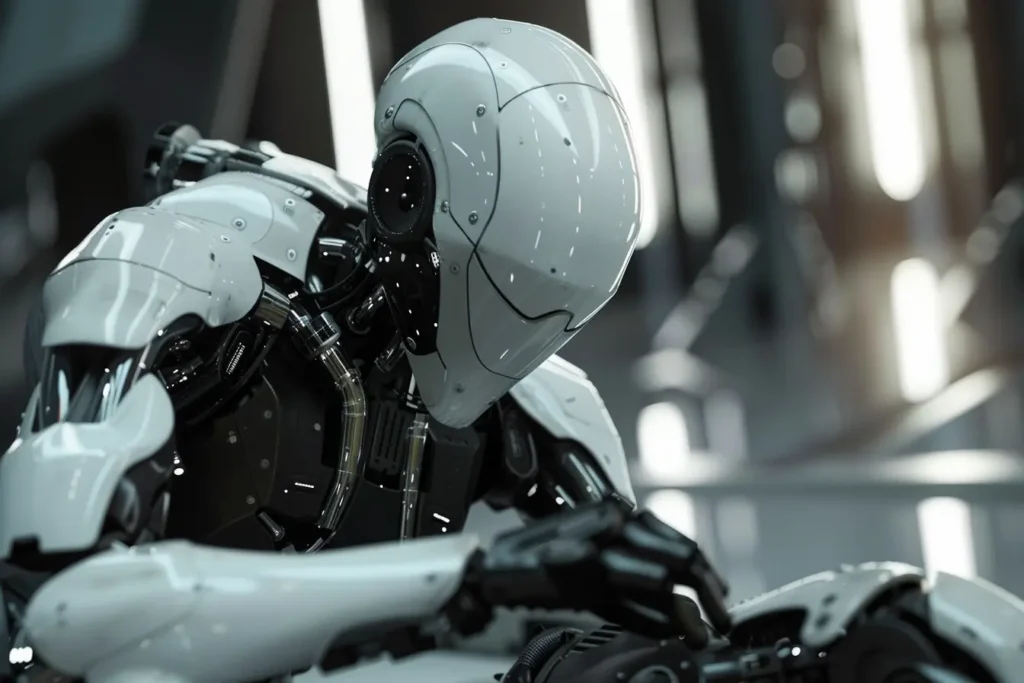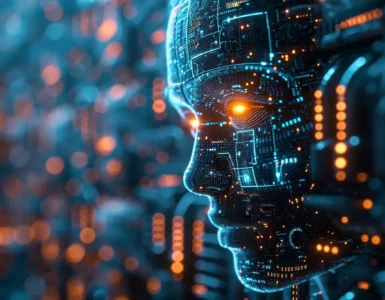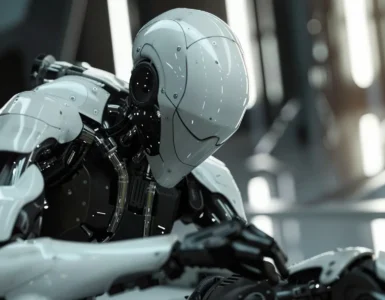“The next wave of AI is here. Robotics, powered by physical AI, will revolutionize industries,” Jensen Huang, Nvidia
Currently, AI is changing the game in various industries and our everyday lives. One particularly transformative area that is emerging is Physical AI. This field merges AI with physical systems, allowing machines to interact with and manipulate the physical world in ways that were once only seen in sci-fi movies.
From robotics to smart materials and autonomous vehicles, Physical AI is set to redefine how we interact with technology and our environment.


The Birth of Physical AI
Physical AI is a direct result of advancements in both AI algorithms and physical engineering. Traditionally, AI has primarily operated in digital realms, excelling at tasks like data analysis, language processing, and virtual simulations. However, the true power of AI lies beyond the digital realm, in its ability to perform tasks in the physical world.
The early development of robotics laid the foundation for Physical AI. Industrial robots, first introduced in the mid-20th century, were initially designed for repetitive tasks on assembly lines. These robots were efficient but lacked the intelligence to adapt to new tasks or environments. The integration of AI into robotics ushered in a new era of versatility and autonomy. Robots could now learn from their surroundings, make decisions, and carry out complex operations autonomously, without human intervention.
Key Areas of Physical AI
1. Robotics
Robots equipped with AI have come a long way, becoming capable of performing intricate tasks with precision. In manufacturing, AI-driven robots can assemble products, manage inventory, and ensure quality control, improving productivity and reducing errors. Service robots are also becoming more common, assisting in healthcare, hospitality, and retail. These robots can interact with humans, understand commands, and perform tasks like delivering items or providing information.
One of the most promising applications is medical robotics. AI-powered surgical robots assist surgeons in performing minimally invasive procedures with high precision, leading to shorter recovery times and better patient outcomes. Rehabilitation robots help patients regain mobility through personalized therapy sessions, adapting to their progress and needs.
2. Smart Materials
Smart materials are engineered to change their properties in response to environmental stimuli, such as temperature, pressure, or electrical signals. AI enhances these materials by enabling them to make autonomous decisions based on real-time data.
For example, in architecture, smart materials can adapt to environmental changes, improving energy efficiency and comfort. Windows made of smart glass can adjust their transparency based on the amount of sunlight, reducing the need for artificial lighting and air conditioning. In wearable technology, smart fabrics can monitor vital signs, adjust their properties for better comfort, and even administer medications.
3. Autonomous Robotic Vehicles
Autonomous vehicles, like cars, trucks, and drones, are some of the coolest examples of Physical AI. They use sensors, cameras, and AI algorithms to navigate and make decisions on their own, without needing humans to step in.
Autonomous cars, with their fancy driver-assistance systems, can handle all sorts of tricky driving tasks, like staying in their lanes, adjusting their speed, and even driving themselves in certain conditions, in the future autonomously in all conditions. This technology is super promising because it can help reduce traffic accidents, ease congestion, and provide transportation options for people who can’t drive. Robotic cars can also help mitigate the impact of climate challenges.
Then there are delivery drones, another type of autonomous vehicle. These little guys can zip around cities, dodging obstacles and delivering packages with lightning speed and efficiency. They have the potential to totally change how we do logistics, especially when it comes to delivering stuff to your doorstep. Drones are also perfect dual-use technologies, serving both defense and civilian needs.


The Impact of Physical AI
Integrating AI into physical systems has a massive impact on a bunch of different sectors.
- Economic Impact. Physical AI can seriously boost productivity and efficiency. In manufacturing, robots powered by AI and smart factories can make goods faster and with fewer mistakes. In logistics, autonomous vehicles can help streamline supply chains, which cuts costs and speeds up deliveries.
- Healthcare Advancements. AI-powered robots and smart health devices are doing amazing things in healthcare. They’re improving patient outcomes and making it easier for people to get the care and help they need. AI diagnostic tools are also very helpful because they can analyze medical images and data more accurately, which means we can catch diseases earlier and come up with better treatment plans.
- Environmental Benefits. We’ve got the planet in mind too! Smart materials and AI systems that are built into things can help make everything more sustainable. Buildings with special materials can use less energy, and smart grids can make sure electricity from renewable sources is used in the best way possible.
The rise of Physical AI comes with some important questions about ethics and society. One big concern is that lots of jobs might be taken over by automation. Sure, new jobs will be created, but there’s a need to help people learn new skills. Also, privacy and security are huge issues since AI systems gather and process a ton of data. Making sure these systems are secure and used ethically is important.
As AI becomes a bigger part of our lives, the way we interact with machines will change too. Physical AI can make things more accessible for people with disabilities by providing devices and interfaces that adapt to their needs. But it’s crucial that these systems are easy to use and understand so that everyone can benefit from them.
The Future of Physical AI
The future of Physical AI is super exciting! There are so many possibilities. As AI algorithms get even better, along with sensor technology and materials science, we’ll see even more innovation. And it’s not just about one field—experts from all sorts of areas, like computer science, engineering, and biology, will need to work together to make this happen.
But wait, there’s more! We also need to create strong rules and regulations to deal with the ethical, legal, and social stuff that comes with Physical AI. Governments, industry leaders, and researchers should team up to make policies that ensure these technologies are developed and used safely and fairly.
To sum it up, Physical AI is like a whole new frontier where digital intelligence meets the physical world. By making robots, materials, embedded systems, and autonomous vehicles even smarter, Physical AI is going to change industries.
About the Author


Cristina Andersson is an entrepreneur, author, and management consultant. She has worked with artificial intelligence and robotics since 2011, as an expert in different EU and national organizations as well as with several companies.
She is also a member of the Nordic Council of Ministers AI Ethics Expert Group. Cristina was a Member of the Steering group, and chair of the Green Transition Group of the Finnish National Artificial Intelligence 4.0 program led by the Ministry of Employment and the Economy.
Moreover, Cristina was chair for the Artificial Intelligence working group at the Finnish Standards Association, and member of the board of the Federation of Finnish Enterprises in Helsinki. She coordinated the National Program for AI and Robotics in Healthcare for the Ministry of Social Affairs and Health. She is a member of the Nordic Ethical AI Expert Group, and member of the EU Horizon Cluster 4 Committee in Finland, and member of a steering group at the Helsinki University Hospital.
Tune into a panel discussion at the ninth annual Data Innovation Summit! In this panel, Cristina, along with other industry experts, speaks on Understanding the European Artificial Intelligence Act. Cristina also covers the act’s potential impact on data and AI innovation efforts across industries and functions
For the newest insights in the world of data and AI, subscribe to Hyperight Premium. Stay ahead of the curve with exclusive content that will deepen your understanding of the evolving data landscape.













Add comment